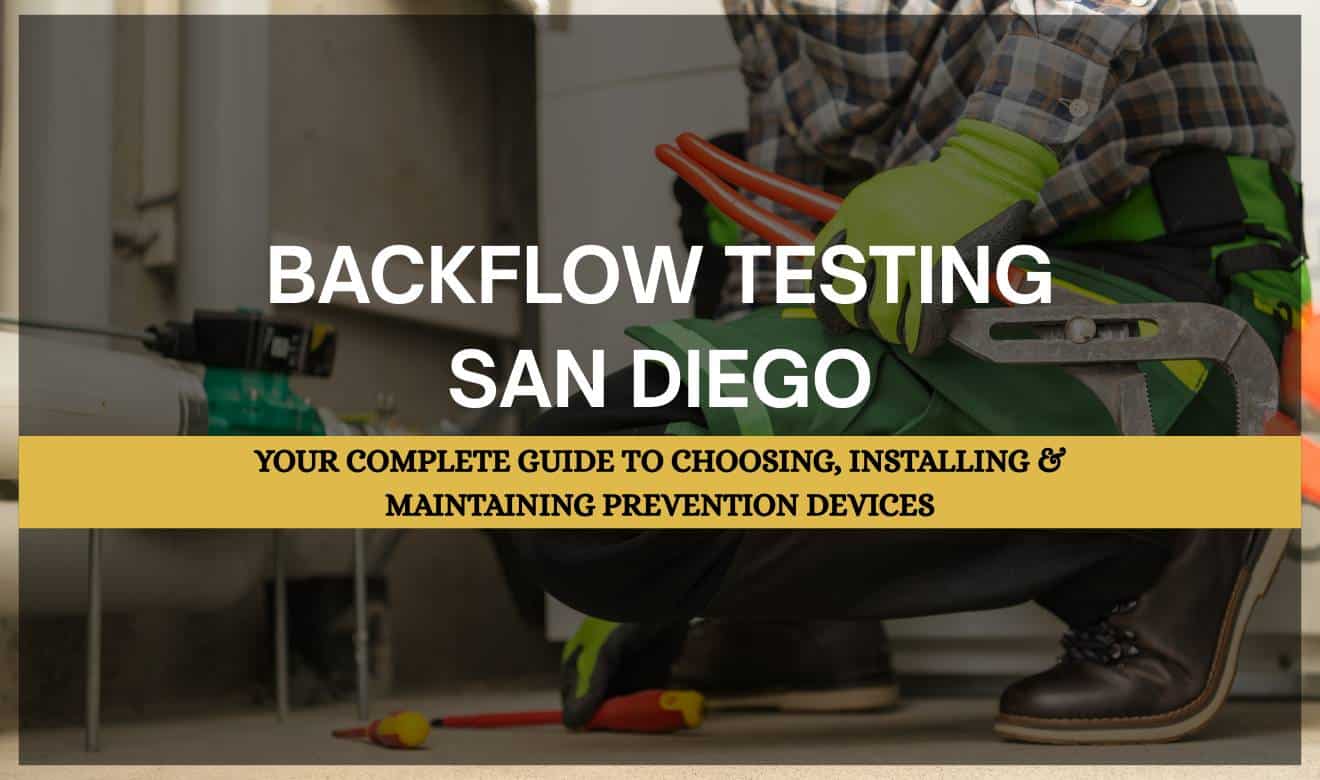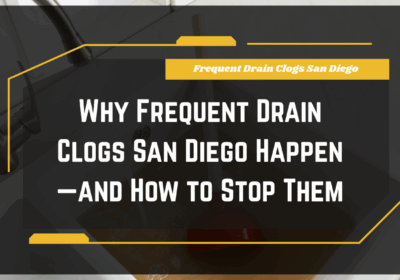Backflow Testing San Diego: Your Complete Guide to Choosing, Installing & Maintaining Prevention Devices
Why Backflow Testing San Diego Should Be Your Priority
In San Diego, ensuring a clean and safe water supply isn’t just a best practice—it’s a necessity. That’s where backflow testing San Diego comes in. Backflow prevention devices are the unsung heroes that protect potable water from contamination caused by backflow—a reverse flow of potentially hazardous substances into the drinking water system. Whether you own a residential property, commercial building, or operate an irrigation system, understanding and maintaining these devices through regular backflow testing San Diego is a crucial step in staying compliant with local codes and ensuring community health.
Understanding the Basics of Backflow
What Is Backflow and Why Is It Dangerous?
Backflow occurs when water flows in the opposite direction from its intended path, potentially drawing contaminants into the clean water supply. This can happen due to a sudden drop in pressure (back-siphonage) or an increase in downstream pressure (back-pressure). In a city like San Diego, where water infrastructure plays a vital role in public health, the consequences of untested systems can be dire. That’s why backflow testing San Diego isn’t just a checkbox on a to-do list—it’s an essential public safety measure. Backflow events can introduce fertilizers, pesticides, human waste, and other pollutants into drinking water, making annual testing and proper device use a top priority.
Common Scenarios That Cause Backflow
You’d be surprised how everyday activities can trigger backflow risks. Think garden hoses left submerged in pools, improperly maintained irrigation systems, or broken water mains. These situations may seem harmless, but they create vulnerabilities in the water system. Backflow testing San Diego helps identify these weaknesses before they turn into public health emergencies. Recognizing these risk factors early allows property owners to take proactive steps to protect their water lines and their community.
Types of Backflow Prevention Assemblies
Reduced Pressure Zone (RPZ) Assemblies
Reduced Pressure Zone assemblies are designed for high-hazard environments where contamination could be severe. These include medical facilities, manufacturing plants, and commercial properties. RPZs include a relief valve that opens when the pressure differential isn’t ideal, allowing any backflow to safely exit rather than contaminate clean water. If your San Diego property falls into a high-risk category, RPZs paired with regular backflow testing San Diego are a must to ensure protection and compliance.
Double Check Valve Assemblies (DCVA)
DCVAs are a popular option for low to medium hazard environments like apartment complexes or fire sprinkler systems. They contain two check valves in series, providing a double layer of protection. While they might not offer the same high-level defense as RPZs, DCVAs still require annual inspection. Backflow testing San Diego ensures that these devices are working as expected and alerts you to any wear and tear before it becomes a liability.
Pressure Vacuum Breakers (PVB)
PVBs are commonly found in irrigation systems throughout San Diego. These devices are effective at preventing back-siphonage but not back-pressure, so their use is limited to specific applications. They include an air inlet valve and a check valve that stops contaminated water from entering the system. To keep PVBs in good shape, schedule consistent backflow testing San Diego to detect any malfunctions that might compromise your water integrity.
Air Gaps
Air gaps are the most straightforward and reliable form of backflow prevention. By physically separating the water supply from any potential contaminants, air gaps eliminate the risk of cross-connection entirely. They’re often used in dishwashers, laundry sinks, and commercial food prep areas. While they require no mechanical parts, it’s still wise to evaluate their placement and use during routine backflow testing San Diego inspections.
Choosing the Right Backflow Device for Your Property
Assessing Hazard Levels
Not all properties require the same level of protection. One of the first steps in selecting a backflow prevention device is evaluating your site’s hazard level. Is your property residential with minimal risk, or does it involve chemicals or high-volume water flow? In San Diego, codes vary depending on your location and building type, so working this out early saves time and ensures you meet backflow testing San Diego requirements effectively.
Factoring in Installation and Maintenance Needs
Beyond hazard level, consider the practicality of installation and upkeep. Devices like RPZs may require more space and frequent maintenance. Think about access points, surrounding conditions, and your ability to regularly schedule backflow testing San Diego. Proper placement and thoughtful installation can drastically reduce service interruptions and long-term costs.
Best Practices for Installation in San Diego
Meet Local and Manufacturer Standards
Installation isn’t just about connecting pipes. In San Diego, devices must comply with city ordinances and be installed according to manufacturer guidelines. This includes proper spacing, elevation, and protection against flooding or freezing. Failing to install devices correctly can result in failed inspections, costly rework, and non-compliance with backflow testing San Diego standards.
Ensure Easy Access for Testing and Repairs
One of the biggest mistakes property owners make is placing the device in a hard-to-reach spot. Accessibility is key for annual backflow testing San Diego and quick repairs. Install units in open, ventilated areas with room for technicians to work. This foresight saves time and prevents unnecessary service delays down the road.
Maintaining & Testing Your Backflow Prevention Devices
Schedule Annual Backflow Testing San Diego
Routine testing is more than a recommendation—it’s a legal requirement in San Diego. Every year, certified testers must check the performance of your backflow prevention devices to ensure they meet local standards. Skipping your backflow testing San Diego deadline can lead to fines, water shutoffs, or worse, contamination events. Set reminders and schedule early to stay ahead.
Keep Records and Act Quickly on Repairs
Document your backflow testing San Diego results and act fast on any flagged issues. Whether it’s a minor leak or a full device failure, swift repairs are essential to keeping your system compliant and your water safe. Many properties benefit from maintaining a digital record of inspections and service logs for easy reference during city audits.
Staying Compliant with San Diego Regulations
Know the Rules and Stay Updated
San Diego has specific guidelines around which properties require testing, how often, and by whom. These rules are subject to change, so staying current is critical. Subscribe to city updates and consult official resources to make sure your backflow testing San Diego procedures are up to date.
Leverage Available Resources
Don’t go it alone. San Diego provides resources including certified tester directories, ordinance updates, and compliance checklists. Utilize these tools to streamline your process and make backflow testing San Diego less of a headache and more of a habit.
Overcoming Challenges in Backflow Prevention
Protecting Devices from Theft or Damage
Unfortunately, backflow devices are prime targets for theft or vandalism. Enclosures, cages, and lockable covers can deter tampering and environmental damage. These upgrades are especially useful in public or high-traffic areas and can be discussed during routine backflow testing San Diego checkups.
Preparing for Emergency Backflow Events
No system is foolproof, which is why a contingency plan is critical. Know how to isolate your backflow device, shut off the water supply, and notify the proper authorities in the event of a contamination scare. Your backflow testing San Diego provider can often help you draft an emergency response plan tailored to your property.
What It Really Costs (and Saves) in the Long Run
Budgeting for Installation, Testing, and Maintenance
Costs vary depending on the type of device and its application, but expect to pay for annual testing, occasional part replacements, and protective gear. The good news? Regular backflow testing San Diego and proactive maintenance can save thousands by preventing contamination, property damage, and penalties.
Long-Term Value of Compliance
Staying compliant with backflow testing San Diego requirements not only protects public health but also enhances the value and credibility of your property. In a city where water quality is non-negotiable, playing by the rules is always the smartest move.
Keep San Diego’s Water Safe—One Test at a Time
Backflow testing San Diego isn’t just for plumbers or commercial building managers. It’s a shared responsibility that impacts everyone who turns on a tap. From choosing the right device to scheduling annual checkups, every step you take helps protect San Diego’s most valuable resource: clean water. Be proactive, stay informed, and take backflow testing seriously—because when water flows the wrong way, the consequences can ripple far beyond your property line.
Ready to Take the Next Step? Let HomePro Plumbing and Drains Help
If you’re searching for reliable, professional help with backflow testing San Diego, look no further than the experts who know San Diego regulations inside and out. HomePro Plumbing and Drains offers thorough, certified testing and maintenance for all types of backflow prevention devices. Whether you’re due for your annual inspection or need a new device installed, HomePro takes the hassle off your plate with transparent pricing and local expertise. Your water safety isn’t something to gamble on. Book your service today and enjoy peace of mind tomorrow.



